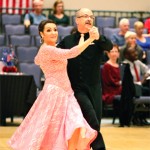Think you need to brush up on your presenting skills? Chances are you probably do. According to Benjamin Asher, MD, founder of Asher Integrative Ear, Nose & Throat in New York City, public speaking is something physicians are rarely trained for.
“[Physicians] either think they don’t have the time or they don’t need it,” he says. A seasoned presenter, Dr. Asher says he knows what it’s like to become uneasy in the middle of a presentation, and he says even a highly confident speaker will benefit from taking the time to refine his or her presentation skills. That’s what he did, working with coaches to help him warm up and feel grounded at the podium, project his voice, and speak at an appropriate speed.
“It makes a huge difference to be able to give a talk that’s bright and has everybody behind it and that is engaging for the audience to hear,” Dr. Asher says. “In my experience, there’s not a person out there who’s an engaging speaker that hasn’t worked at honing the craft.”
Whether you’ve given hundreds of presentations throughout your career or are preparing for your first conference lecture, there’s always room for improvement when it comes to professional speaking.
Practice, Practice, Practice
Preparation may seem like an obvious tip, but it’s one that’s often overlooked, either due to time constraints or overconfidence, says George M. Hall, PhD, DSc, professor of anesthesia at St. George’s University of London in the UK and author of How to Present at Meetings, 3rd edition (Wiley, 2012). (Disclaimer: Wiley is also the publisher of The Rheumatologist.) “The problem with senior presenters such as myself is that as we get old we think we can skimp on the preparation and the rehearsal and then we give a poor presentation,” he says.
Sticking to a rule of thumb given to him by a professor years ago, Dr. Hall suggests one hour of preparation for every minute of a presentation. “That’s hopefully a little bit too much if you’re particularly familiar with the topic, but if you’re starting from scratch, it’s probably about right.”
Part of preparing is developing a practical core message with an opening that captures the audience’s attention, says Susan Miller, PhD, a speech pathologist and CEO and founder of the Voicetrainer, LLC, a voice coaching and communication consulting business. “That might be a fact that gets the audience thinking about the prevalence or relevance of a topic,” she says.



